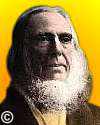
On 12 Feb 1791, Peter Cooper was born, the American inventor who built the Tom Thumb locomotive (1830), the first American-built steam locomotive to operate on a common-carrier railroad.
He also was issued the first U.S. patent for the manufacture of gelatin (1845), which he sold in 1895 to Pearl B. Wait, a cough-syrup maker. Wait produced the packaged gelatin dessert, Jell-O, which was so-named by his wife.
Back to the railway story. Shortly before he died, Cooper's recollections of how he built the Tom Thumb were printed in the Boston Sunday Herald (9 Jul 1882). In his own words, you can read how a demonstration ride had to be postponed because the night before, all the copper steam pipes had been stripped from the engine, “doubtless to sell to some junk dealer.” (Sound familiar? And that was 180 years ago!)
See if you can guess the result of a race between the Tom Thumb locomotive and a stagecoach horse, and check by reading the article on Peter Cooper's Locomotive.
Yet this accomplishment was a minor sidelight in Peter Cooper's career, whose life work included being a manufacturer and businessman whose philanthropy established the Cooper Union for the Advancement of Science and Art in New York city. It provided free technical education to the working class. He was involved with the laying of the first transatlantic cable, and was so prominent as a civic leader that when he died at age 92, his body lay in state for the general public to pay their respects as the city of New York mourned his passing. His estate was valued at two million dollars. A truly remarkable man, who deserves your attention.

On 12 Feb 1873, Barnum Brown was born, the American paleontologist who discovered the first Tyrannosaurus rex fossil. Today's book pick is: Bones for Barnum Brown: Adventures of a Dinosaur Hunter, by Roland T. Bird. With vivid writing, this book reads like an adventure story. Bird writes of his experiences as right-hand man to Barnum Brown of the American Museum of Natural History during the 1930s. Bird mapped the mass of dinosaur bones at the Howe Quarry site for the Barnum Brown, and continued that association while searching for foot prints of dinosaurs. The book begins with a concise introduction to vertebrate paleontology, and includes many photographs and drawings.
It is available from Amazon, typically about New from $34.73. Used from $6.28. (As of earlier time of writing - subject to change.)
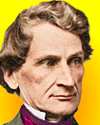 | A map of the moon... should be in every geological lecture room; for no where can we have a more complete or more magnificent illustration of volcanic operations. Our sublimest volcanoes would rank among the smaller lunar eminences; and our Etnas are but spitting furnaces. |
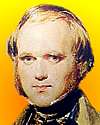 | ...I believe there exists, & I feel within me, an instinct for the truth, or knowledge or discovery, of something of the same nature as the instinct of virtue, & that our having such an instinct is reason enough for scientific researches without any practical results ever ensuing from them. |
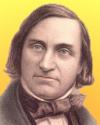 | As to giving credit to whom credit is due, rest assured the best way to do good to one’s-self is to do justice to others. There is plenty for everybody in science, and more than can be consumed in our time. One may get a fair name by suppressing references, but the Jewish maxim is true, “He who seeks a name loses fame.” |
| Before you look at today's web page, see if you can answer some of these questions about the events that happened on this day. Some of the names are very familiar. Others will likely stump you. Tickle your curiosity with these questions, then check your answers on today's web page. | |
| Births | |
 | An English naturalist, born 12 Feb 1809, propounded evolutionary theories, in such works as The Descent of Man, and Selection in Relation to Sex. Can you name this scientist? |
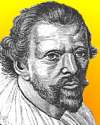 | Jan Swammerdam, born 12 Feb 1637, was a Dutch naturalist, considered the most accurate of classical microscopists. He studies ranged from insects to human anatomy. His ingenious experiments showed that muscles alter in shape but not in size during contraction. Swammerdam was the first to observe and describe a certain of cell in 1658. For which type of cell did Swammerdam give the first description? |
| Deaths | |
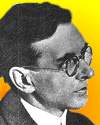 | Dirk Coster (1889-1950) was a Dutch physicist who co-discovered the element hafnium. He named it from Hafnia, the old Roman name for the well-known city in the Netherlands where he had worked in Niels Bohr's laboratory. What is the modern name of Hafnia? |
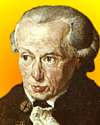 | Immanuel Kant (1724-1804) was a German philosopher, who also trained as a scientist. In 1755, he published a book which had a title beginning: “General History of Nature and ...” which had several insights for a certain field of science. Which science was implied in the rest of the title? |
| Events | |
 | On 12 Feb 1973, four metric distance road signs, the first in the U.S., were erected along Interstate 71 in Ohio. They showed the distance in both miles and kilometers between Columbus and Cincinnati, and Columbus and Cleveland. What is a 100 kilometer distance in miles? |
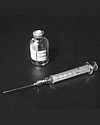 | On 12 Feb 1941, the first injection of penicillin into a human test subject was conducted by Ernst Chain and Howard Walter Florey. Who coined the name penicillin? |
Fast answers for the previous newsletter for February 11: Hungarian • Thomas Alva Edison • that the Earth rotates on its axis • mathematics (ex. Cartesian coordinates) • fission.
 If you enjoy this newsletter, the website, or wish to offer encouragement or ideas, please send feedback by using your mail reader Reply button.
If you enjoy this newsletter, the website, or wish to offer encouragement or ideas, please send feedback by using your mail reader Reply button. Your click on a Facebook, StumbleUpon, or other social button on the site webpages is also a welcome sign of appreciation. Thank you for using them.
© This newsletter is copyright 2020 by todayinsci.com. Please respect the Webmaster's wishes and do not put copies online of the Newsletter — or any Today in Science History webpage. (If you already have done so, please remove them. Thank you.) Offline use in education is encouraged such as a printout on a bulletin board, or projected for classroom viewing. Online, descriptive links to our pages are welcomed, as these will provide a reader with the most recent revisions, additions and/or corrections of a webpage. For any other copyright questions, please contact the Webmaster by using your mail reader Reply button.
--
If you do not want to receive any more newsletters, Unsubscribe
To update your preferences and to unsubscribe visit this link
Executive Real Estate Business Class
-
"It was like a man with wings. It wasn't like anything you'd see on TV or in a monster movie." ...
About the publisher
Search This Blog
Blog Archive
-
▼
2021
(585)
-
▼
February
(72)
- Mary Seacole | The Spitfire | George Washington
- On This Day for February 28 - Olof Palme assassina...
- On This Day for February 27 - Chile struck by eart...
- On This Day for February 26 - Napoleon's escape fr...
- On This Day for February 25 - Ousting of Marcos in...
- Demystified: How Do Penguins Tell Each Other Apart?
- On This Day for February 24 - U.S. President Andre...
- On This Day for February 23 - Alamo besieged by Sa...
- On This Day for February 22 - Cloning of Dolly, Ge...
- Your essential guide to the Tudors | LGBT+ history...
- On This Day for February 21 - Malcolm X assassinat...
- On This Day in History by OnThisDay.com: You are n...
- February 21: The 1st Romanov Tsar, the 1st Locomot...
- On This Day for February 20 - John Glenn's orbit o...
- On This Day for February 19 - Iwo Jima invaded by ...
- 🎉 Ready for 30% Off Kids' Memberships?
- On This Day for February 18 - Pluto discovered by ...
- Newsletter for Thursday 18 February.
- Demystified: Why Does Salt Melt Ice?
- On This Day for February 17 - Vietnam invaded by C...
- Newsletter for Wednesday 17 February.
- On This Day for February 16 - Power in Cuba seized...
- Newsletter for Tuesday 16 February.
- On This Day for February 15 - USS Maine destroyed,...
- Newsletter for Monday 15 February.
- February 15: The King of Persia, the Human Genome ...
- Who was Saint Valentine?
- On This Day for February 14 - Fatwa issued against...
- Newsletter for Sunday 14 February.
- February 14: Battle of Cape St Vincent, the Teleph...
- On This Day for February 13 - William and Mary cro...
- Newsletter for Saturday 13 February.
- February 13: Baghdad falls to the Mongols, the Bil...
- On This Day for February 12 - Chile's independence...
- Newsletter for Friday 12 February.
- February 12: The Qing Dynasty Ends, The Senate Acq...
- Demystified: Why Do We Say “A Pair of Pants”?
- On This Day for February 11 - St. Bernadette's fir...
- Newsletter for Thursday 11 February.
- February 11: Margaret Thatcher's Rise to Power, Ne...
- Watch ‘Tuskegee Airmen: Legacy of Courage’
- 🇺🇸💰Your Presidents' Day Exclusive Bonus!
- On This Day for February 10 - Kasparov-versus-comp...
- Newsletter for Wednesday 10 February.
- February 10: End of the French-Indian War, HMS Dre...
- All-New Tonight: 'The Food That Built America' Sne...
- On This Day for February 9 - Calcutta restored to ...
- Newsletter for Tuesday 9 February.
- February 9: Massachusetts Rebels, the Battle of Gu...
- On This Day for February 8 - Mary, Queen of Scots,...
- Newsletter for Monday 8 February.
- February 8: Mary Stuart is Decapitated, Napoleon L...
- What did Mary Tudor think of Anne Boleyn and her o...
- On This Day for February 7 - British Invasion laun...
- Newsletter for Sunday 7 February.
- February 7: The 1st English Prince of Wales, the M...
- Newsletter for Saturday 6 February.
- On This Day for February 6 - Accession of Elizabet...
- February 6: Maximilian I and Elizabeth II Ascend t...
- Black History Month: The Tuskegee Airmen Documenta...
- On This Day for February 5 - Punic Wars ended, Han...
- February 5: Congo Taken as a Personal Possession a...
- On This Day for February 4 - Yalta Conference open...
- February 4: The Chinese Song Dynasty, World's Olde...
- Serving Up an All-New Season
- On This Day for February 3 - Fifteenth Amendment t...
- February 3: The Naval Battle of Diu, Universal Suf...
- On This Day for February 2 - Ban on African Nation...
- February 2: New Amsterdam Grows Up, the US Pays Me...
- On This Day for February 1 - Space shuttle Columbi...
- Newsletter for Monday 1 February.
- February 1: Black History Month Starts and a Day o...
-
▼
February
(72)
-
Blogroll
-
About
HistoryFact










0 comments:
Post a Comment